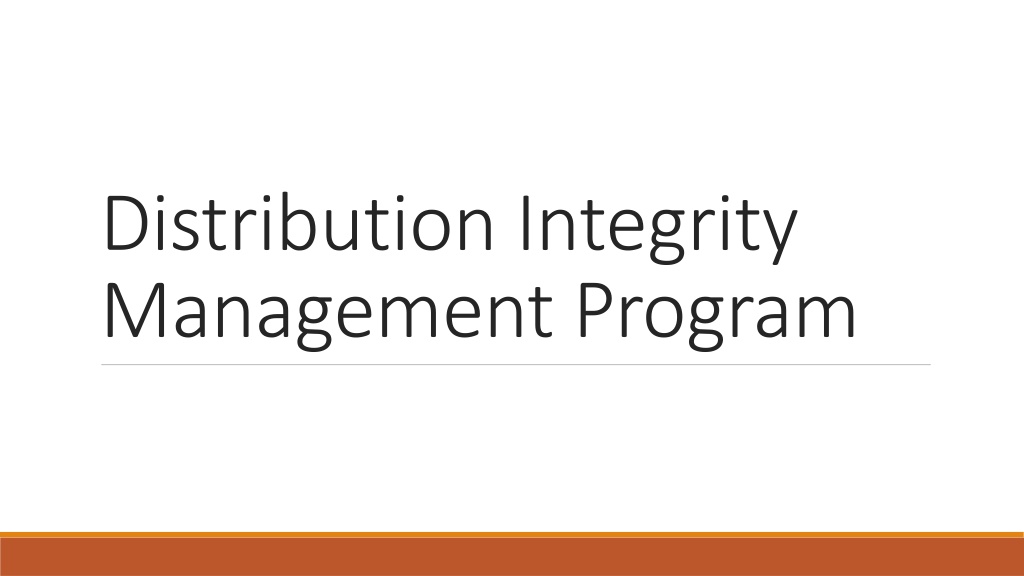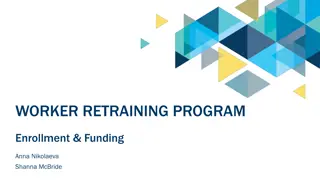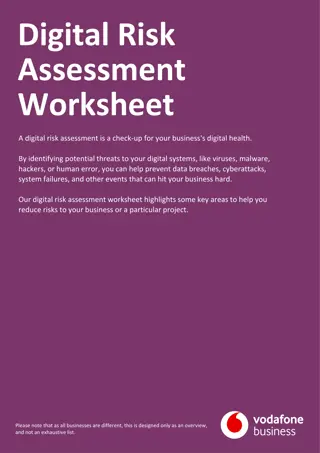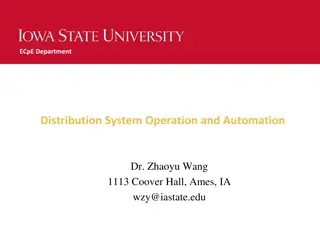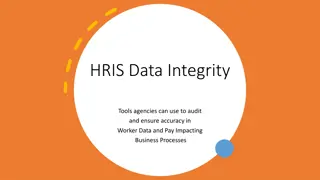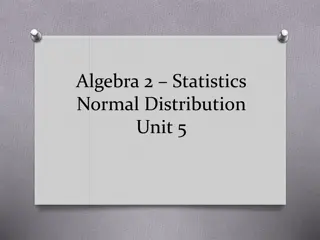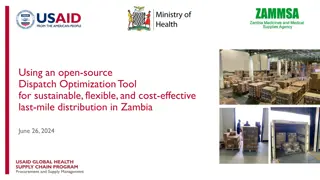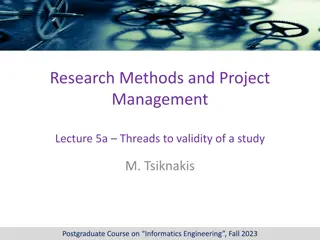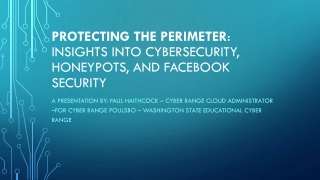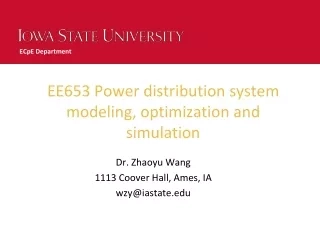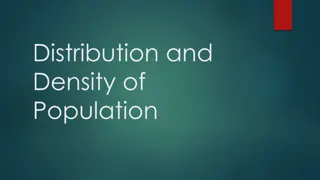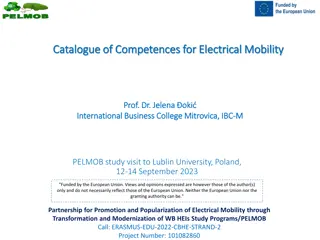Understanding Threats in Distribution Integrity Management Program
Distribution Integrity Management Program (DIMP) focuses on ensuring the integrity of pipelines by understanding and managing various threats. Operators are responsible for identifying, categorizing, and addressing potential threats such as corrosion, natural forces, excavation damage, and more to prevent leaks and ensure pipeline safety.
Download Presentation
Please find below an Image/Link to download the presentation.
The content on the website is provided AS IS for your information and personal use only. It may not be sold, licensed, or shared on other websites without obtaining consent from the author. Download presentation by click this link. If you encounter any issues during the download, it is possible that the publisher has removed the file from their server.
Presentation Transcript
Distribution Integrity Management Program
NEW Topics DIMP Submission of Plans (NEW) Pipeline Technical Resources (NEW)
DIMP Areas of Concern Overall Understanding Threats O&M Application New Installation Information
Overall Understanding It IS the responsibility of the OPERATOR to understand and manage the risks associated with their pipelines. It is NOT the responsibility of a consultant It is NOT the responsibility of the state/federal regulatory department It is NOT the responsibility of one individual
Threats What is a threat? An activity, situation or condition, that left uninterrupted or uncorrected, can result in damage or an injury to people or property. Threat may not cause an immediate leak
Threat Categories Corrosion Natural Forces Excavation Damage Other Outside Force Damage Material or Welds Equipment Failure Incorrect Operations Other Concerns
Threat Subcategories Corrosion Atmospheric Bare Steel Coated Steel Copper Rectifier (failure) Loss of cathodic protection
Existing Threats Easily Known 3rdParty Damage Leaks
Potential Threats Threats not previously experienced Industry and PHMSA lists threats Advisory Bulletins Aging infrastructure Endangered facilities without a leak Dent Exposed pipe and near misses Non-leak threats Over pressurization Manufacturing threats
Threats Although a threat has not caused a leak, it is still a threat. DO NOT become complacent and ignore obvious threats. If you operate a gas system, then your system contains a multitude of threats.
Threats? All steel system. Is PE a threat? A PE system installed in the late 1990 s. Is pre-73 Aldyl A a threat? These examples would not warrant consideration as a threat.
Threats? All steel system containing bare pipelines. Is bare steel a threat? A PE system containing pre-73 Aldyl A . Is pre-73 Aldyl A a threat? These examples would warrant consideration as a threat.
Threats? What if I have not encountered a leak or failure with pre-73 Aldyl A pipe. Is it still a threat? YES Although failures or leaks have not occurred, the potential remains.
Threats Material in your system is a threat Know the material in your system Track failures (Performance Measures)
Excavation Damage Operator A- Zero damages (leaks) over the previous 9 years. Operator B- Multiple damages (leaks) each year during the previous 9 years.
Excavation Damage Is Excavation Damage a threat to: A. Operator A B. Operator B C. Neither D. Both A and B
Excavation Damage D. Both Operator A and B
Excavation Damage Failure to encounter a leak does not remove excavation damage as a potential threat.
Interactive Threats Interactive threats are two or more threats that, when occurring simultaneously, pose a threat to pipeline integrity Coating damage as a result of poor excavation practices must be considered an interactive threat. Damage + Corrosion = Pipeline Failure Third party damage remains a threat even though no leakage has occurred.
Operator Error Can be an indicator of three potential threats Failure to follow procedures Inadequate procedures Inadequate training and qualification
Operator Error Mitigative Measures Quality Assurance Self Inspection Contacted Inspection Training Enhanced training programs Qualification Hands on review of task performance Procedure review and modification
Natural Forces Frost Heave Rodents Seismic Activity Slumps/Earth Movements Subsidence (mines, etc.) Water/Flood
Threat Ranking Primary Threat Subcategory Measure to Reduce Risk Performance Measure Corrosion External Corrosion on Bare Service Lines Replace approximately 100 bare service lines each calendar year Track number of leaks caused by external corrosion per 1000 bare service lines annually Excavation Damage Third Party Damage Conduct pre- construction meetings or monitor locate ticket for life of ticket Track frequency of failures per 1000 excavation tickets annually Natural Forces Washout Conduct patrols 4 times a year and after flooding occurrences along Panther Creek Track number of exposed pipe occurrences along Panther Creek annually
Tracking Threats Know the threats Know the subcategory of threats Track the number of leaks, failures, near misses, etc. Review records Determine a baseline (leak, failures, etc.) Determine if the threat is increasing, decreasing, or staying the same If the threat exceeds baseline then take additional actions Replacement Increase patrols Exceed Part 192 requirements
O&M DIMP Relationship DIMP requirements may exceed O&M OR Federal requirements Other CFR Requirements may interact with DIMP requirements 192.613: Continuing Surveillance and 192.617: Failure Investigation may serve as threat identification requiring mitigative measures in the DIMP Apply the DIMP requirements to the O&M When the threat no longer exists, may update O&M
O&M DIMP Relationship Example Threat Natural Forces Distribution pipeline located along Panther Creek for 4 miles Records indicate occurrences of exposed pipeline over the last 30 years IF the records are available, you must look beyond last five years 192.721 a Frequency based on conditions 192.721 b Outside business district twice a year not to exceed 7 months DIMP states 4 times a year AND after occurrences of flooding Update O&M to include patrolling requirements for this segment of pipeline
Information of New Installation 192.1007 (a) (5)- Provide for the capture and retention of data on any new pipeline installed. The data must include, at a minimum, the location where the new pipeline is installed and the material of which it is constructed. (material does not simply mean steel , it should include specification, grade, etc.) PHMSA Guidance further clarifies Pipeline includes all pipe, fittings, etc. Must include beyond location and material Manufacturer, lot number, specification, etc.
New Installation Tracking Importance Why is it valuable to track new Installations? Manufacturing defect Improper installation Exact location is known Able to remove the defect Proactive mitigative measure Save money and resources determining the location of the defect
ASTM F2897 Standard Specification for Tracking and Traceability Encoding System of Natural Gas Distribution Components (Pipe, Tubing, Fittings, Valves, and Appurtenances) Contains a system of written number/letter combinations, which includes a bar code.
Implementation of ASTM F2897 AGA plastics committee has met with vendors to discuss where they are with implementing this standard. This standard does not apply to steel. Industry is working on a standard for steel. Once industry has adopted this standard, then operators will be able to implement the system Vendors offering services to track and trace bar coded items This is not required, but a tool for the operator
Future DIMP Audits DIMP Implementation Form- Is an evaluation of an operator s implementation of DIMP through a records review and actions performed on its pipeline. Review to determine DIMP procedures were followed Review records to determine proper information is captured and the records are maintained for 10 years JULIE Locates (Digger) Observe through field activities if DIMP requirements are met
DIMP Going Forward Change the cultural mindset Reactive Proactive Begin predicting areas of concern NTSB
DIMP Going Forward DIMP needs to mature and continuously improve Take lessons learned and build upon them Add and incorporate information pertaining to gaps Capture all pertinent information for new pipelines Include all individuals/groups into the DIMP mindset
Submission of Plans Part 590 Plans submitted to Chief Clerk Automatically sent to ICC Pipeline Safety Not a review Testing with a few operators Instructions
Pipeline Technical Resources PHMSA website Includes- DIMP, TIMP, OQ, etc. FAQ s, Protocols, Meetings, etc. http://primis.phmsa.dot.gov/ptr.htm
